You remember genes and chromosomes vaguely from biology class and you’ve seen more than enough DNA helixes.
If you wonder how genes, chromosomes, and DNA fit together, this post is for you.
Where’s my DNA?
Nearly all your DNA is in one section of the cell — the nucleus.
Human cells are complex enough to have their own little “organs” (called organelles), and the nucleus is the largest of these.1
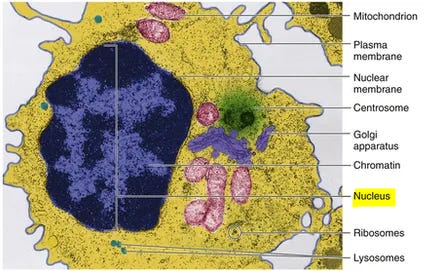
We care about DNA mostly because of its role in creating proteins — complex, sophisticated, and enormously important molecules in a cell.2
Red blood cells and platelets have no nucleus, so they have no DNA.
DNA is not a single specific chemical — like salt or ammonia -- but a name for any molecule built a certain way. You know about the ladder rungs, and probably have heard that each rung can be chosen from four possibilities (A, T, G, C)3. Individually the rung choice means nothing; the sequence tells you everything, and it’s anybody's guess which one comes next. The ends of the ladder are molecularly different, so you can always tell which rung is first.
Human DNA has 3 billion rungs.4 Each cell has 6 feet of DNA packed inside.
So what are chromosomes?
Your DNA is not one long helix. Each chromosome is a spooled-up DNA molecule. “Your DNA” is the sum of what’s in those chromosomes.5 Genome is just a fancier term for this.
Chromosomes have their own meme, the elongated X:

But the X is a publicity shot. A chromosome spends almost no time looking like this. In particular, it's not an X but an unremarkable I, and instead of standing boldly alone it's packed like a rush-hour commuter with other chromosomes into the nucleus.6
The chromosomes are where those 6 feet of DNA wind up — literally. The DNA molecule is coiled and wrapped around itself and wrapped around itself some more. It's remarkable not only that nature got it in there, but that it can periodically get it out.7
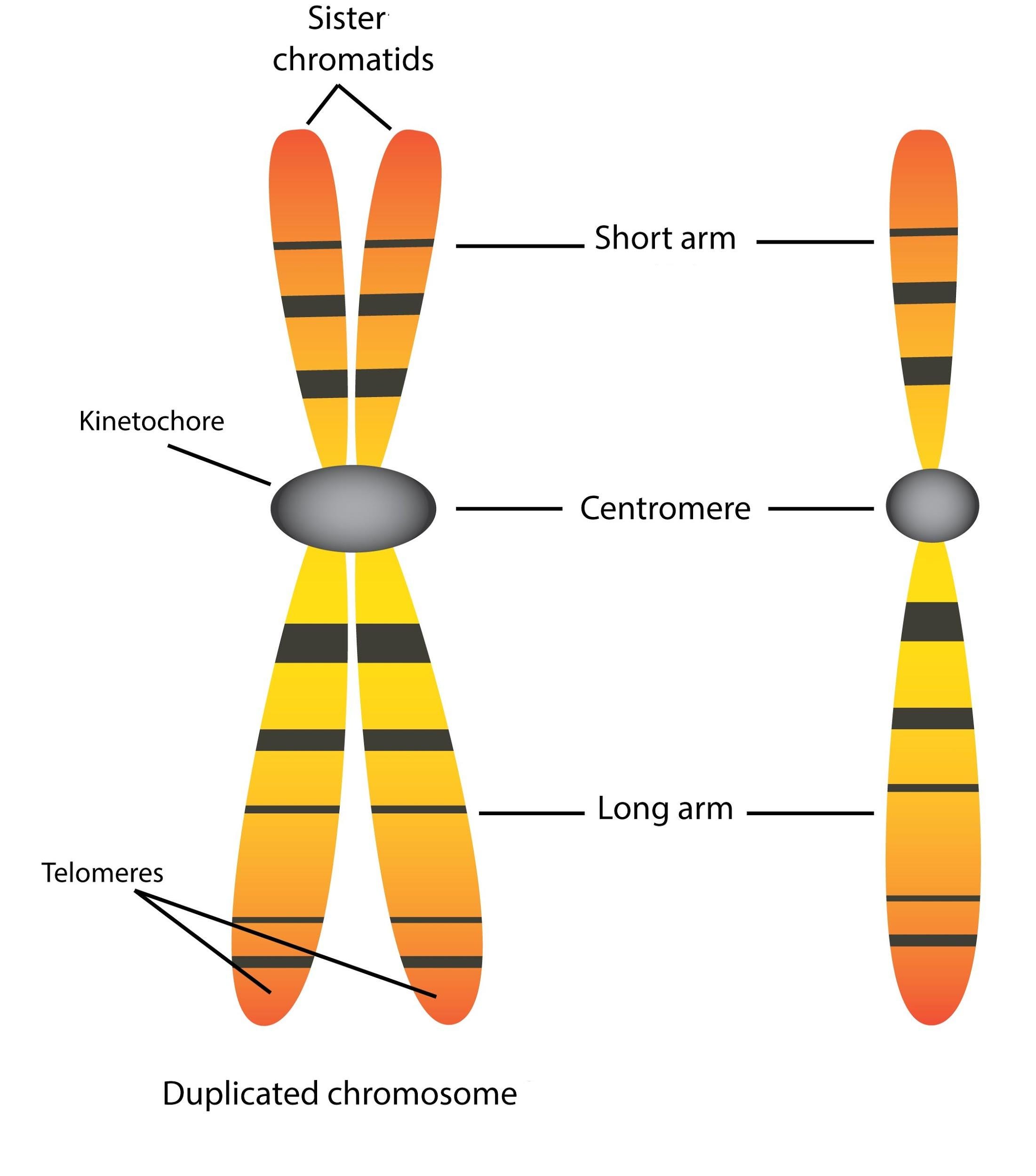
And genes?
A gene is one defined stretch of DNA in a chromosome.
Every gene is responsible for making a protein8. PSA is made by the KLK39 gene in chromosome 19. PSMA is made by the FOLH1 gene in chromosome 11.10
The gene is said to express the protein and the process is called gene expression.
DNA itself doesn’t become protein; it gives coded instructions to be carried out elsewhere. That involves copying out the DNA (transcription) into a second nearly identical molecule you’ve also heard of, RNA. The RNA is then used to assemble the protein (translation). 11
Not all DNA makes protein. Genes, important as they are, take up only about 1% of DNA. Some of the remaining 99% regulates when, how, and how much of a protein is made, but a lot of what’s done there isn’t known.
And even within a gene, not all DNA is directly connected with expression. In addition to “expression” regions called exons that provide the protein recipe, genes have “intragenic” regions called introns that direct the assembly process in ways not always clear.

Beyond genes
We should note in passing that every one of your cells has the same DNA — lung cells, liver cells, bone cells — so there must be something else in the mix. This something is called epigenetics (from epi- meaning “on top of”). It relies in part on that tight DNA packing we mentioned earlier. DNA is the organism’s complete blueprint, and to create an organ you only need part of it. Epigenetic activity unrolls the needed DNA so it can be read, and it also can play chemical tricks to make part of the DNA effectively invisible.
Some millionths of a percent of your DNA is in a set of other organelles, the mitochondria, visible in the photo as the reddish ovals labeled mitochondrion (the singular). Mitochondrial DNA has its own separate life.
Food proteins are indeed proteins. It can take time to stop thinking of cells as filled with meat.
After a million years together, adenine, thymine, guanine, and cytosine are famous enough to go by first initials.
You might think that as nature’s fanciest creation we have the most DNA, but the champ of the animal kingdom is the marbled lungfish, with 44 times our DNA, and it in turn is outdone by a plant, the Japanese canopy plant, with 50 times our DNA. Much of their huge genomes appears to be duplicated DNA.
Plus the little bit in your mitochondria.
The X is a chromosome that’s been duplicated — the left and right of the X are identical. They two will be pulled apart outside the nucleus when the cell divides; one of the halves will occupy the new cell.
We get one set of chromosomes each from mom and dad, and I first thought the X was a parental pair — but it isn’t. When a cell divides and its chromosomes assume the X shape, there will be X’s from each parent:
This video — an animation made to look like a view through a microscope — gives a feel for all the levels of compaction.
Strictly speaking, a gene is responsible for creating a gene product, which most often is a protein, but sometimes it’s RNA that’s not destined to become a protein and remains RNA.
Gene names are italicized to help distinguish them from protein names. Often a gene and its protein have the same name.
Here’s a close-up of chromosome 11 showing some of its 1,300 genes — it's a particularly gene-rich chromosome — including FOLH1, the gene that expresses PSMA:
Every chromosome has a centromere (the black area in the figure) that divides it into a short arm called p (for petit) and a long arm q (for queue, French for tail; the system was drafted at an international meeting in Paris). A gene location is expressed by supplying its chromosome number, its arm (p or q), and a number indicating the bands it’s near.
To diagnose genetic diseases, doctors would look for abnormal banding. DNA sequencing seems to have displaced much of this visual scrutiny.
Why use RNA? DNA’s molecular design emphasizes stability — it’s a blueprint for future generations — which means it interacts relatively little with other molecules. RNA is livelier but also more perishable.
Unlike the straightforward transcription of DNA to RNA, the translation of RNA to protein has forks in the road that yield a variety of proteins from a single RNA molecule.



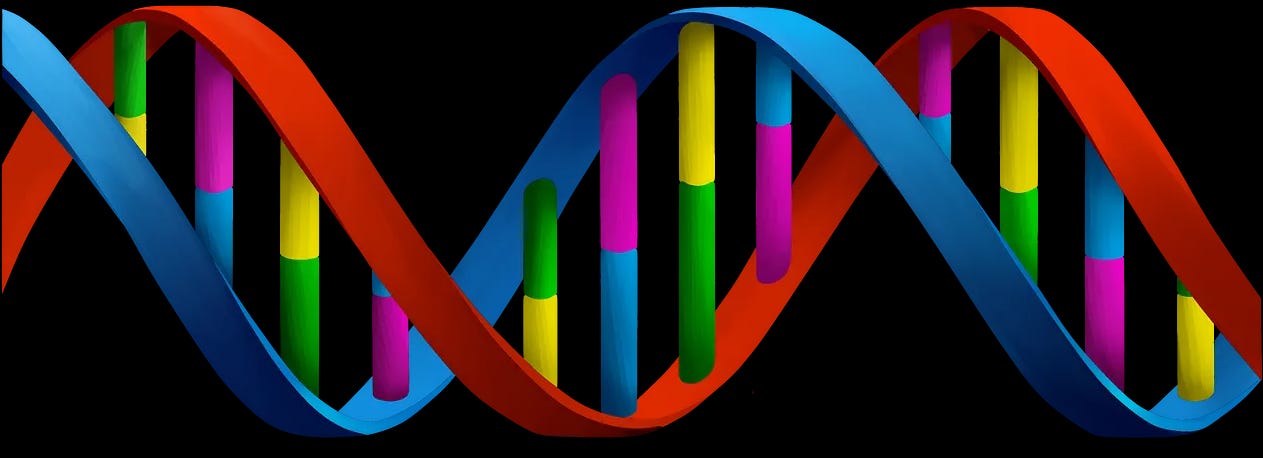
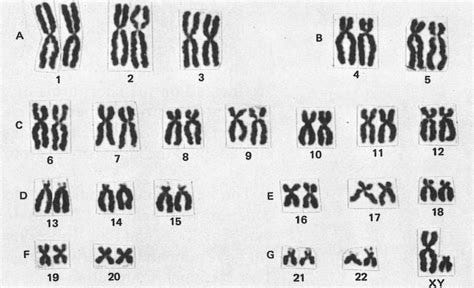
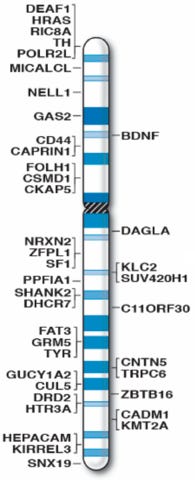
I think I'm less confused ... I'll be bookmarking this and returning!!
The chromosome arms being labeled p and q always makes me think of the old phrase “mind your Ps and Qs”. As a cancer researcher, I’d love it if that phrase changes to mean avoiding activities that make oncogenic genetic mutations likely to occur, rather than minding one’s manners! :)